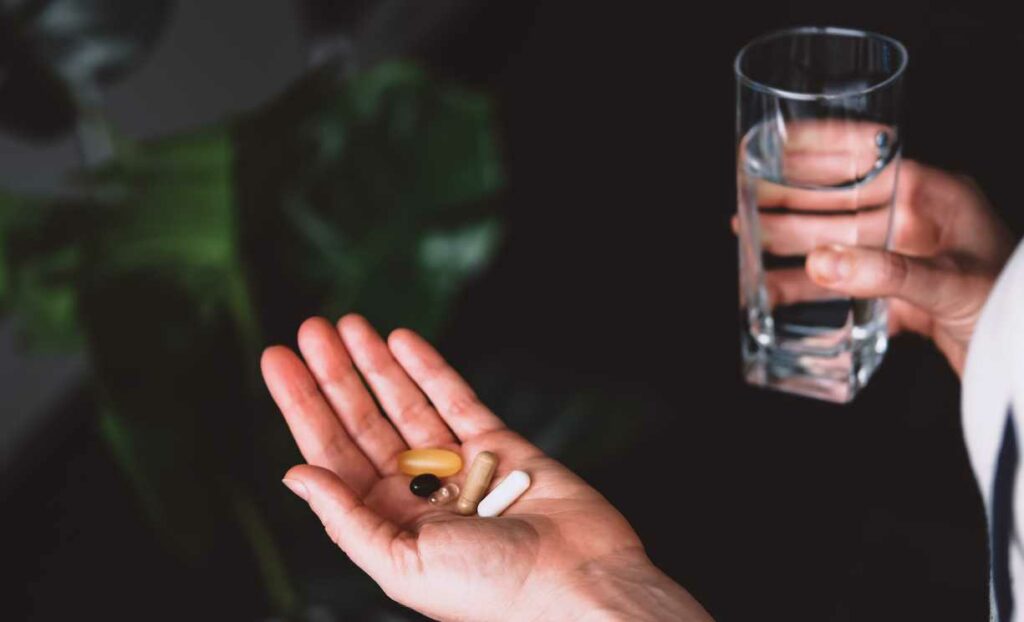Vaginal atrophy, a common condition often associated with menopause, can bring discomfort and impact the overall quality of life for many women. Fortunately, various medications are available to address the symptoms and promote vaginal health. In this blog, we’ll explore the causes and symptoms of vaginal atrophy, shedding light on the diverse medication options designed to provide relief and enhance well-being.
Contents
Understanding Vaginal Atrophy
Understanding vaginal atrophy is like uncovering the changes that happen in a woman’s body, particularly in the vaginal area, as a natural part of getting older. The key player in this process is estrogen, a hormone that keeps the vaginal tissues healthy and vibrant. As women go through menopause, estrogen levels drop, leading to thinning, drying, and sometimes inflammation of the vaginal walls. Imagine it as the body’s way of adjusting to a new chapter. Things like childbirth, breastfeeding, and certain medical treatments can also play a role.
But the good news is, by understanding these changes, women can work with healthcare professionals to find solutions and strategies to keep feeling comfortable and confident in their bodies. It’s a journey that many women navigate, and with the right support, it becomes a manageable part of the natural aging process.
Symptoms Of Vaginal Atrophy
Understanding these symptoms is crucial for women experiencing vaginal atrophy. It allows them to communicate effectively with healthcare professionals, seeking tailored solutions. So, here are a few common symptoms of vaginal atrophy:
- Vaginal Dryness: Vaginal dryness is a common symptom of vaginal atrophy, where the natural lubrication that makes intimate activities comfortable diminishes. The lack of moisture can lead to feelings of dryness and tightness in the vaginal area, causing discomfort and sometimes even irritation.
- Itching and Burning Sensation: Thinning of the vaginal walls can lead to itching and a burning sensation. Imagine it like the skin becoming more delicate, making everyday activities, wearing certain fabrics, or even intimate moments more prone to causing discomfort.
- Painful Intercourse: The increased sensitivity and reduced elasticity of the vaginal tissues can result in pain or discomfort during sexual activity. This can significantly impact the quality of intimate relationships, emphasizing the importance of addressing the underlying causes.
- Urinary Symptoms: Vaginal atrophy can affect the nearby urinary tract, contributing to symptoms like increased frequency and urgency. It’s like the body signaling that changes are occurring in the pelvic region, impacting various aspects of daily life.
- Changes in Vaginal Discharge: Alterations in the usual vaginal discharge are another indication of vaginal atrophy. The changes may involve differences in consistency, volume, or even odor, reflecting the shifts happening in the vaginal environment.
Treatment For Vaginal Atrophy
The treatment for vaginal atrophy involves addressing the symptoms and underlying causes to improve overall vaginal health and comfort. Here are common approaches to managing and treating vaginal atrophy:
- Hormone Therapy: Hormone therapy, particularly involving estrogen, is a primary approach to treating vaginal atrophy. Topical estrogen in the form of creams, gels, or tablets can be applied directly to the vaginal area, providing localized relief from dryness and discomfort. Vaginal estrogen rings, like Estring, offer a continuous, low-dose release of estrogen. In some cases, systemic hormone therapy, such as oral estrogen supplements, may be recommended to address broader hormonal imbalances.
- Non-Estrogen Options: For those who cannot or prefer not to use estrogen, non-estrogen options are available. Ospemifene, an oral medication, acts like estrogen in the vaginal tissues, offering relief from dryness and discomfort, especially during intercourse.
- Moisturizers and Lubricants: Over-the-counter moisturizers and lubricants provide immediate relief from vaginal dryness. Regular use helps maintain moisture levels, enhancing comfort in daily life and intimate situations.
- Pelvic Floor Exercises: Strengthening the pelvic floor muscles through exercises, commonly known as Kegel exercises, is a non-pharmacological approach to improve blood flow to the vaginal area and maintain muscle tone. These exercises can be beneficial for overall vaginal health.
Medications For Vaginal Atrophy
Medications for vaginal atrophy aim to alleviate symptoms and improve the overall health of the vaginal tissues. Here are common medications used in the treatment of vaginal atrophy:
- Estrogen Therapy:
- Topical Estrogen: Creams, gels, or tablets containing estrogen are applied directly to the vaginal area to replenish estrogen levels locally, addressing dryness and discomfort.
- Vaginal Estrogen Rings (Estring): Flexible rings inserted into the vagina release a steady, low dose of estrogen over time, providing continuous relief.
- Systemic Hormone Therapy: Oral estrogen supplements may be prescribed in systemic hormone therapy to address overall hormonal imbalances affecting the entire body.
- Non-Estrogen Options: Non-estrogen options such as ospemifene (osphena) is an oral medication that acts like estrogen in the vaginal tissues, helping to alleviate symptoms such as dryness and pain during intercourse.
- Moisturizers and Lubricants: Non-prescription moisturizers and lubricants offer immediate relief from vaginal dryness. They are easily accessible and can be used regularly to maintain moisture.
- Selective Estrogen Receptor Modulators (SERMs): Bazedoxifene/Conjugated Estrogens (Duavee) is a combination medication involves a SERM (bazedoxifene) along with conjugated estrogens to address vaginal atrophy symptoms while mitigating potential risks associated with estrogen use.
It’s crucial for individuals experiencing vaginal atrophy to consult with their healthcare providers before starting any medication. Healthcare professionals can assess individual health factors, discuss potential risks and benefits, and tailor a treatment plan that aligns with specific needs. Regular follow-ups ensure ongoing monitoring and adjustments as necessary to optimize treatment outcomes.
Lifestyle Changes For Managing Vaginal Atrophy
Managing vaginal atrophy involves not only medications but also incorporating lifestyle changes that promote overall vaginal health. Here are lifestyle modifications that can contribute to managing and improving symptoms of vaginal atrophy:
- Hydration: Staying well-hydrated is fundamental for overall health, including vaginal moisture. Adequate water intake supports the body’s natural lubrication processes, contributing to vaginal comfort.
- Regular Sexual Activity or Stimulation: Engaging in regular sexual activity or self-stimulation promotes blood flow to the vaginal tissues. This helps maintain elasticity and reduces discomfort associated with vaginal atrophy. Communication with a partner about comfort levels is crucial.
- Pelvic Floor Exercises (Kegel Exercises): Strengthening the pelvic floor muscles through exercises, such as Kegels, can enhance blood circulation to the pelvic region. This promotes muscle tone and may contribute to improved vaginal health.
- Maintain a Healthy Lifestyle: Adopting a healthy lifestyle, including a balanced diet and regular exercise, positively impacts overall well-being. A nutrient-rich diet supports the body’s natural processes, and regular physical activity contributes to cardiovascular health.
- Avoid Irritants: Steer clear of potential irritants that can worsen vaginal symptoms. This includes scented soaps, bubble baths, and certain fabrics. Opt for gentle, fragrance-free products to minimize irritation.
- Use Lubricants and Moisturizers: Incorporating over-the-counter vaginal moisturizers and lubricants into daily routines helps maintain moisture and comfort. These products provide immediate relief from dryness and can be especially helpful during intimate moments.
- Regular Check-ups: Schedule regular check-ups with healthcare providers to monitor the effectiveness of the chosen treatment plan. This ensures that any necessary adjustments can be made to optimize care.
- Emotional Well-being: Recognize and address emotional well-being. Vaginal atrophy can impact a woman’s self-esteem and intimate relationships. Open communication with a healthcare provider, and potentially a counselor or therapist, can provide support and guidance.
Conclusion
In conclusion, addressing vaginal atrophy involves a multifaceted approach, with the right medication playing a pivotal role in alleviating symptoms and enhancing overall vaginal health. Medications such as estrogen therapy, including topical applications and systemic hormone therapy, have proven effective in replenishing hormone levels and providing relief from dryness and discomfort. Non-estrogen options like ospemifene offer alternatives for those who may not use or prefer estrogen-based treatments.
Regular check-ups with healthcare providers are essential for monitoring the effectiveness of the treatment plan and making any necessary adjustments. The holistic approach to managing vaginal atrophy emphasizes not only physical well-being but also emotional health, recognizing the impact this condition may have on self-esteem and intimate relationships.





